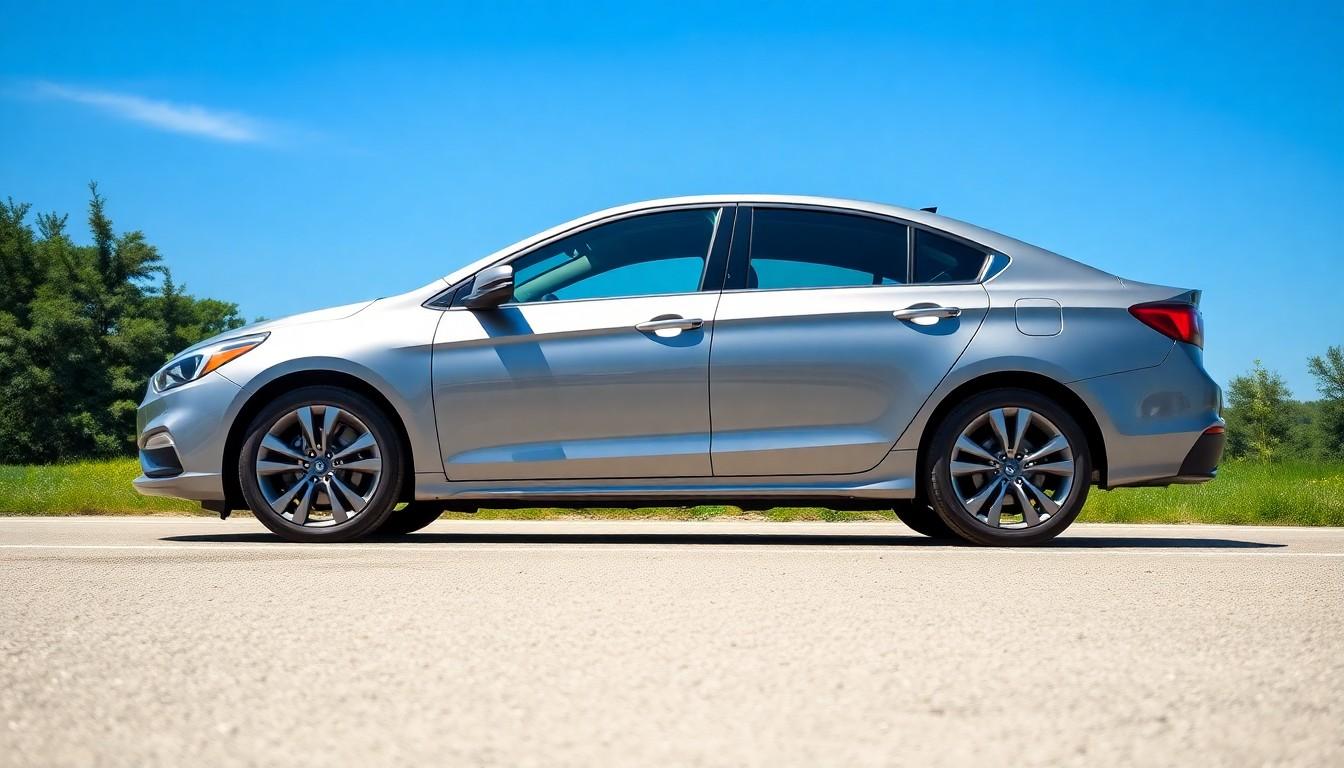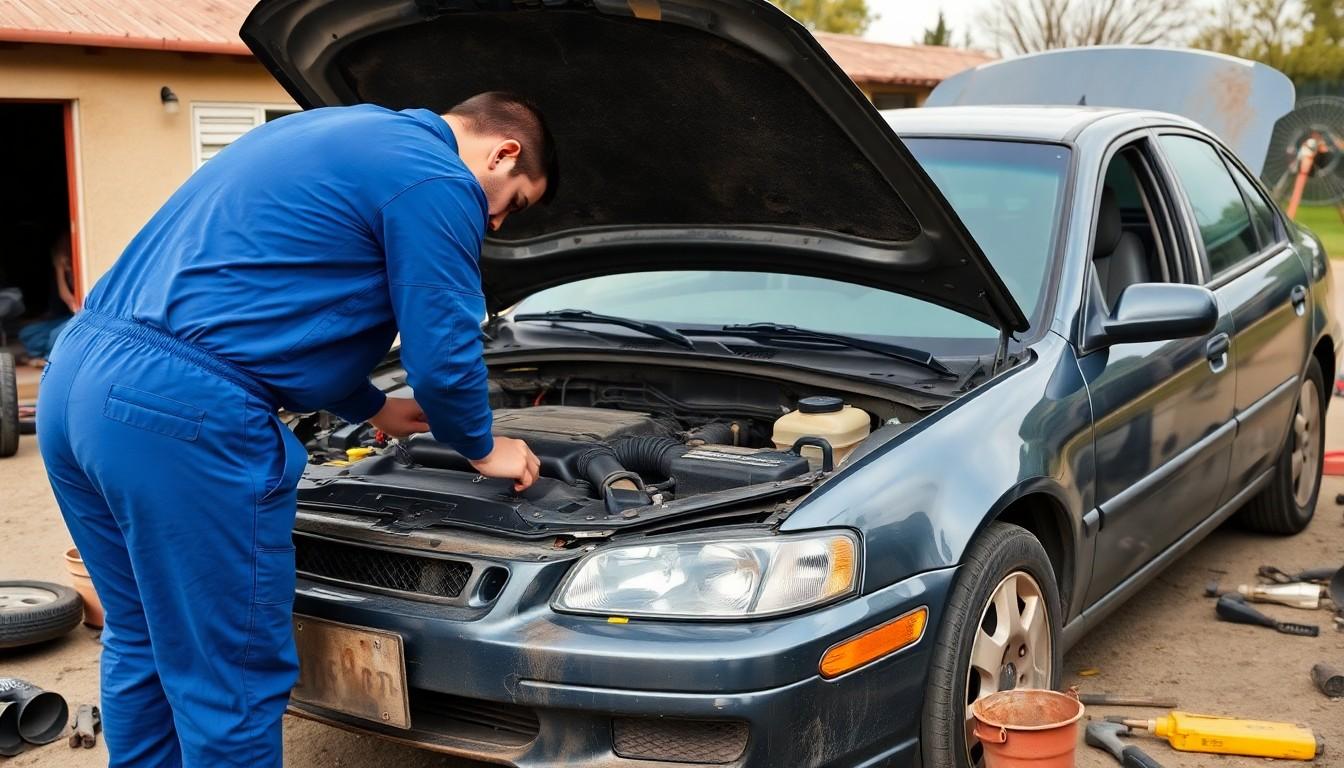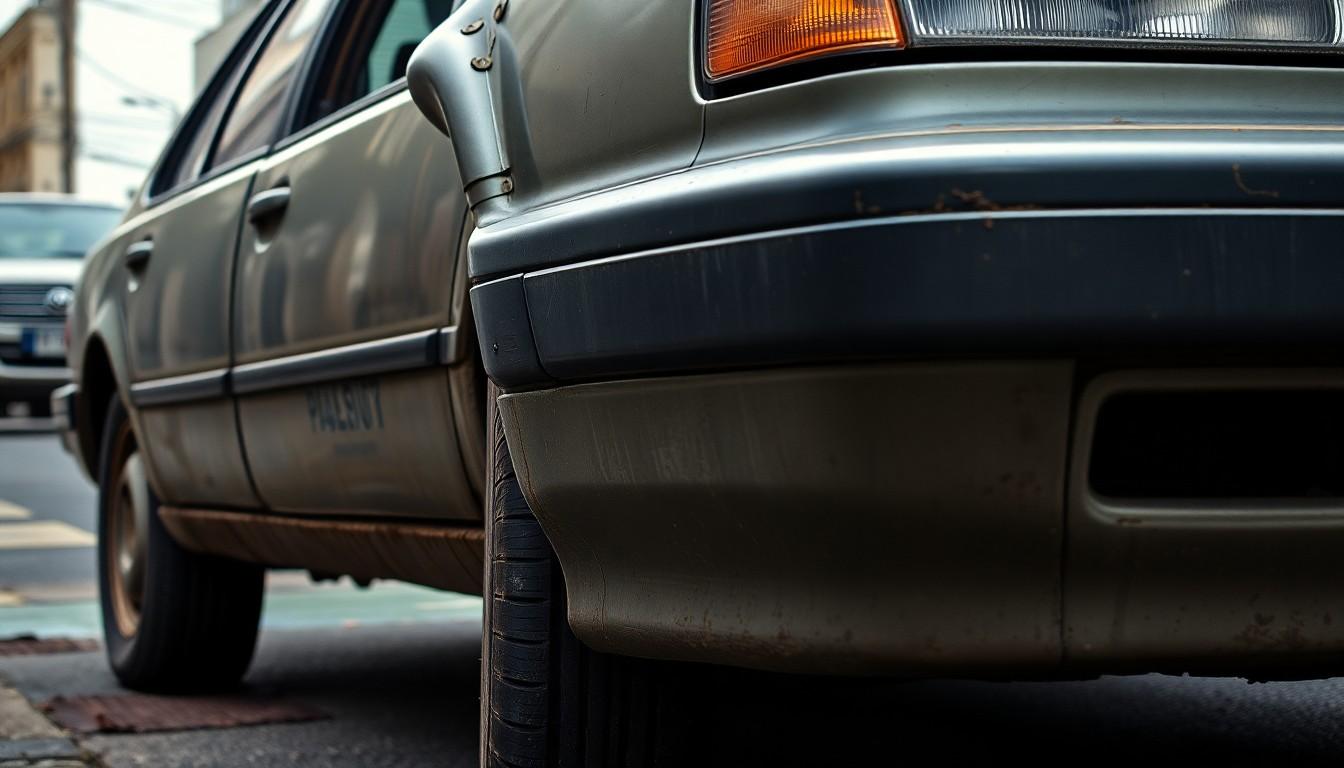Hunting for a used car can feel like handling a minefield, especially when that odometer reading makes you pause. We’ve all heard the warnings about high-mileage vehicles, but what exactly constitutes “too many miles” in today’s automotive market?
The truth is, the old 100,000-mile rule no longer applies to modern vehicles. With advances in engineering and manufacturing, many cars can now comfortably surpass 200,000 miles with proper maintenance. We’ll help you understand what really matters when evaluating a used car’s mileage and share insider tips to ensure you don’t walk away from a great deal—or worse, drive home a money pit disguised as a bargain.
Understanding Mileage in Used Cars
Mileage serves as a critical indicator when evaluating used vehicles. It’s one of the first metrics most buyers check, but understanding what those numbers truly represent requires looking beyond the odometer reading.
What Mileage Really Tells You
Mileage reflects a car’s usage history and potential remaining lifespan. High numbers don’t automatically signal a bad purchase, while low mileage doesn’t guarantee a superior vehicle. The odometer reading indicates how much wear the engine, transmission, and other mechanical components have experienced over time. Cars driven predominantly on highways typically experience less strain than those used mainly for stop-and-go city driving. Also, mileage helps estimate depreciation rates and future maintenance needs, with certain maintenance milestones typically occurring at 30,000, 60,000, and 90,000 miles. A vehicle’s maintenance records alongside its mileage provide a more comprehensive picture of its true condition and value.
Average Annual Mileage Expectations
American drivers typically log 12,000-15,000 miles annually, establishing a benchmark for evaluating used vehicles. A five-year-old car with 60,000-75,000 miles falls within this average range. Cars with significantly lower mileage might have spent extended periods sitting unused, potentially causing issues with rubber components and fluids. Conversely, vehicles with substantially higher miles may have seen commercial or long-distance commuting use. The driving environment matters too—10,000 miles of rough terrain or extreme weather conditions can cause more wear than 20,000 highway miles in moderate climates. Certain models like Toyota Camrys and Honda Accords regularly exceed 200,000 miles when maintained properly, while luxury or performance vehicles might show important wear at lower mileages due to complex components and higher maintenance requirements.
The 100,000-Mile Threshold: Still Relevant?

The traditional 100,000-mile benchmark has long been considered a critical cutoff point for used car purchases. Many buyers still approach this threshold with caution, associating it with increased repair frequency and higher maintenance costs. But, this once-firm boundary has become increasingly blurred in today’s automotive market.
Modern Engineering and Longevity
Automotive technology has evolved dramatically over the past decades, extending vehicle lifespans well beyond previous expectations. Cars manufactured in the last 10-15 years commonly reach 200,000+ miles while maintaining reliable performance and safety. Toyota and Honda vehicles, in particular, demonstrate exceptional longevity, with many models regularly exceeding 200,000 miles when properly maintained.
Driving conditions significantly impact how well a vehicle ages regardless of the odometer reading. Highway miles put less strain on vital components compared to city driving, which involves frequent stopping, starting, and idling. A 120,000-mile car primarily driven on highways might actually show less wear than an 80,000-mile vehicle used mainly for stop-and-go city commuting.
Maintenance vs. Mileage
Regular maintenance often trumps mileage figures when determining a used car’s actual condition and potential longevity. A comprehensive service history provides more valuable insight than the odometer reading alone. Exact maintenance milestones typically occur at predictable intervals:
| Mileage Range | Common Maintenance Needs |
|---|---|
| 30,000-70,000 | Brake pads and possibly brake discs replacement |
| 60,000-100,000 | Timing belts/chains replacement |
| 100,000-150,000 | Potential transmission repairs or replacement |
A vehicle’s ownership history also plays a crucial role in its condition assessment. Cars with multiple previous owners might have experienced inconsistent maintenance practices, while single-owner vehicles typically receive more consistent care. It’s entirely possible that a 120,000-mile car with documented regular maintenance and one careful owner represents a better purchase than a 70,000-mile vehicle with spotty service records and multiple owners.
Modern vehicles that receive proper maintenance can easily surpass the once-feared 100,000-mile mark with minimal issues. The quality of care throughout a car’s life eventually proves more determinative of its future reliability than any arbitrary mileage threshold.
Key Mileage Benchmarks for Different Vehicle Types

Different vehicles age differently based on their design, build quality, and intended use cases. Understanding these variations helps set realistic expectations when shopping for a used car. Let’s examine how mileage thresholds differ across vehicle categories.
Sedans and Compact Cars
Sedans and compact cars typically start showing increased maintenance needs around the 100,000-mile mark. These everyday vehicles form the backbone of the used car market, with models like Toyota Camry and Honda Accord frequently surpassing 200,000 miles when properly maintained. Regular oil changes, timing belt replacements, and transmission services significantly extend their lifespan beyond this threshold. Most sedan owners can expect relatively trouble-free operation through 150,000 miles with consistent care.
SUVs and Trucks
SUVs and trucks often experience more intense wear due to their common use for hauling, towing, and off-road activities. These vehicles might require more frequent maintenance when approaching 100,000 miles, especially if used extensively for heavy-duty tasks. Their suspension systems, drivetrains, and engine components face greater stress than those in passenger cars. Many modern pickup trucks from Ford, Chevrolet, and Toyota are engineered to reach 200,000+ miles, though transmission issues become more common after 150,000 miles in models used for regular towing.
Luxury Vehicles
Luxury vehicles from premium manufacturers typically feature higher-grade components designed for extended durability. Many luxury models can easily exceed 200,000 miles with proper maintenance regimens. German brands like Mercedes-Benz and BMW incorporate sophisticated engineering that contributes to longevity, though their maintenance costs tend to increase more dramatically at higher mileages. European luxury vehicles generally require more specialized care than their mainstream counterparts, making service history particularly crucial when evaluating high-mileage examples.
Electric and Hybrid Vehicles
Electric and hybrid vehicles present unique considerations about mileage evaluation. These cars contain fewer moving parts in their powertrains, potentially reducing mechanical wear concerns at higher mileages. Battery health replaces many traditional maintenance concerns, becoming the primary factor affecting performance and value. A 100,000-mile hybrid might have significantly less mechanical wear than its conventional counterpart, but its battery capacity likely shows some degradation. Electric vehicles with original batteries approaching 100,000 miles may experience noticeable range reduction, though manufacturers like Tesla design battery packs to maintain at least 70% capacity beyond this threshold.
Beyond the Odometer: Other Factors to Consider

When evaluating a used car, focusing solely on mileage can lead to overlooking critical aspects that determine a vehicle’s true condition. Several additional factors play equally important roles in assessing whether a used car represents a good investment.
Maintenance History Importance
Maintenance records provide concrete evidence of how well a vehicle has been cared for throughout its life. A comprehensive service history with regular oil changes, brake inspections, and tire rotations indicates responsible ownership and proper care. Cars with detailed maintenance documentation often outlast higher-mileage vehicles that lack service records. Missing or inconsistent maintenance history typically signals neglect and forecasts potential expensive repairs down the road. Before purchasing, always ask for service records and verify that maintenance intervals match the manufacturer’s recommendations.
Driving Conditions Impact
The environments and situations a car has experienced significantly affect its condition regardless of mileage. Vehicles driven primarily in harsh weather conditions face accelerated deterioration from elements like extreme temperatures, heavy snow, or road salt that corrodes components. Cars used mainly for short trips or stop-and-go traffic typically endure more engine and transmission stress than those driven on highways at consistent speeds. Rough roads and high pollution areas also contribute to premature wear on suspension components and engine systems. Understanding a car’s previous driving environment helps predict potential hidden issues that mileage alone won’t reveal.
Age-to-Mileage Ratio
The relationship between a vehicle’s age and its accumulated mileage offers valuable insights into potential problems. A 10-year-old car with only 50,000 miles might initially seem appealing but often develops age-related issues like deteriorated rubber components, dried-out seals, and corroded electrical connections. Conversely, a 5-year-old car with 80,000 miles may have been driven extensively on highways, causing less overall strain on the vehicle. Cars that sit unused for extended periods frequently develop problems with fuel systems, batteries, and brakes. The ideal scenario combines reasonable age with appropriate mileage that suggests regular, consistent use without excessive wear.
Red Flags: When Mileage Is Definitely Too High

While there’s no universal threshold for “too many miles,” certain warning signs indicate when a vehicle’s mileage becomes problematic. These red flags help determine if a high-mileage vehicle is worth the investment or likely to become a financial burden.
Vehicle-Exact Mileage Concerns
Modern vehicles typically last longer than older models, with many capable of exceeding 200,000 miles when properly maintained. Different vehicle types have varying tolerance levels for high mileage based on their design and construction quality. Luxury vehicles often feature premium components that contribute to longevity, though their repair costs increase significantly at higher mileages. SUVs and trucks commonly handle higher mileage better than compact cars due to their more robust construction, but they’re also subjected to more demanding driving conditions. Electric and hybrid vehicles present unique considerations because they have fewer moving parts in their drivetrains, potentially reducing mechanical wear compared to conventional vehicles.
Signs of Excessive Wear
High-mileage cars typically exhibit increased deterioration across critical components including the engine, transmission, suspension, and brakes. Maintenance records serve as crucial indicators of a vehicle’s actual condition—a lack of documentation often signals neglected care and potential future problems. Multiple previous owners, especially over a short period, suggests possible recurring issues that prompted frequent reselling. Cars with predominantly city miles show accelerated wear compared to highway-driven vehicles due to constant stop-and-go driving conditions. Body condition offers valuable clues about a vehicle’s history; excessive dents, scrapes, and curb rash indicate potential rough treatment that extends beyond exterior damage. Vehicles approaching or exceeding 200,000 miles face substantially higher risks of requiring expensive repairs like timing belt replacements, transmission overhauls, or complete engine work.
Making a Smart Purchase Decision

Making an well-informed choice when buying a used car requires looking beyond just the odometer reading. A comprehensive evaluation of several factors can help you identify a reliable vehicle regardless of its mileage.
Pre-Purchase Inspection Value
A thorough pre-purchase inspection offers more insight into a car’s condition than mileage alone. Checking maintenance records provides critical information about how well the previous owner cared for the vehicle, which often predicts future reliability better than the number on the odometer. Many experts agree that the overall condition of a car, including its maintenance history, number of previous owners, and physical state, carries equal or greater significance than how many miles it’s traveled. A professional inspection can reveal if a low-mileage vehicle has been poorly maintained, making it potentially less desirable than a higher-mileage car with excellent service records.
Price vs. Mileage Considerations
The relationship between price and mileage isn’t always straightforward in the used car market. Lower mileage vehicles typically command higher prices, but this premium isn’t always justified by the car’s actual condition or longevity prospects. Cars with higher mileage but clean histories and good maintenance records often represent better value for money than their lower-mileage counterparts with questionable histories. Current market conditions significantly impact pricing dynamics as well—during supply shortages, used cars can approach new car prices regardless of mileage. When evaluating the price-mileage equation, it’s essential to consider the exact maintenance intervals the vehicle may have passed through or be approaching. For example, vehicles between 60,000 to 100,000 miles may need timing belt replacements, while those exceeding 100,000 miles might face potential transmission issues that could require costly repairs.
Conclusion
The right mileage for a used car isn’t defined by a single number but by a comprehensive evaluation of its history. Modern vehicles can easily surpass 200,000 miles when properly maintained so don’t let an arbitrary threshold limit your options.
Focus on the complete picture: maintenance records vehicle type driving conditions and age-to-mileage ratio. A well-maintained 150,000-mile Toyota might offer better reliability than a neglected 60,000-mile luxury vehicle.
Remember that a thorough pre-purchase inspection is your best tool for evaluating any used car. We recommend prioritizing service history over odometer readings and keeping potential repair costs in mind when comparing prices. With this balanced approach you’ll find the sweet spot between value and reliability in your next used car purchase.
Frequently Asked Questions
Is 100,000 miles too much for a used car?
Not necessarily. The old 100,000-mile rule is outdated with modern vehicles. Many cars can now exceed 200,000 miles with proper maintenance. What matters more is the maintenance history and how the vehicle was driven, not just the number on the odometer. A well-maintained high-mileage car often outperforms a neglected low-mileage one.
What’s considered good mileage for a 5-year-old car?
For a 5-year-old car, 60,000-75,000 miles is considered ideal. This reflects the average American driving pattern of 12,000-15,000 miles annually. Significantly lower mileage might indicate the car sat unused (which can cause issues), while much higher mileage could suggest commercial use or extensive highway driving.
Do different types of vehicles handle high mileage differently?
Yes. Sedans and compact cars typically require more attention around 100,000 miles. SUVs and trucks may need more frequent maintenance due to heavier usage. Luxury vehicles often have higher-grade components but more expensive maintenance as they age. Electric and hybrid vehicles have fewer moving parts but battery health becomes the primary concern at higher mileages.
Why might a low-mileage used car not be a good deal?
A low-mileage car isn’t automatically better. Vehicles that sit unused can develop problems with seals, gaskets, and fluids. Additionally, extremely low mileage on an older car might indicate odometer tampering. Sometimes, these cars command premium prices that aren’t justified by their actual condition or reliability.
How important is maintenance history compared to mileage?
Maintenance history is often more important than mileage. A comprehensive service record indicates responsible ownership and can better predict a vehicle’s future reliability. A high-mileage car with complete maintenance records is typically a safer bet than a lower-mileage vehicle with spotty or missing service history.
Does the type of miles driven affect a car’s condition?
Absolutely. Highway miles cause less wear than city driving with frequent stops and starts. Harsh environments (extreme temperatures, salted roads, dusty conditions) accelerate deterioration. Short trips prevent proper engine warming, leading to increased internal wear. The quality of miles matters as much as the quantity.
What are the red flags that indicate a high-mileage car might be problematic?
Look for excessive wear on pedals, steering wheel, and seats that doesn’t match the mileage. Check for inconsistent maintenance records, signs of major repairs, or component replacements. Unusual sounds, vibrations, or fluid leaks are concerning. Luxury or performance vehicles with high mileage and no documentation of specialized maintenance should be approached cautiously.
Should I always pay more for lower mileage?
Not always. While lower mileage typically commands higher prices, this premium isn’t always justified. A higher-mileage vehicle with thorough maintenance records and a clean history often represents better value. Consider the vehicle’s overall condition, brand reliability reputation, and upcoming maintenance needs when evaluating the price-mileage equation.

